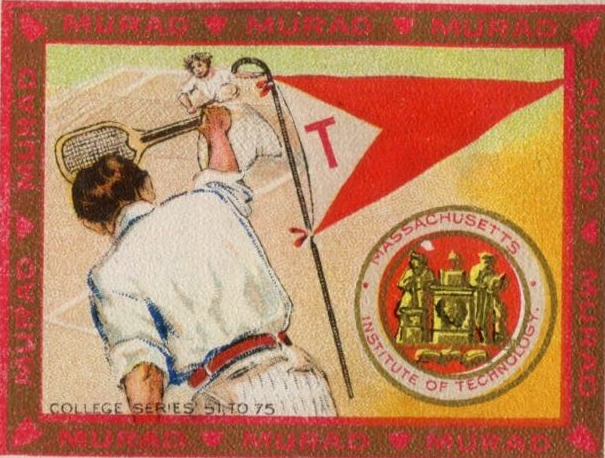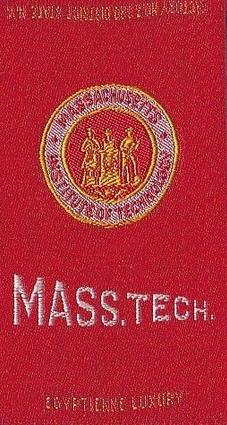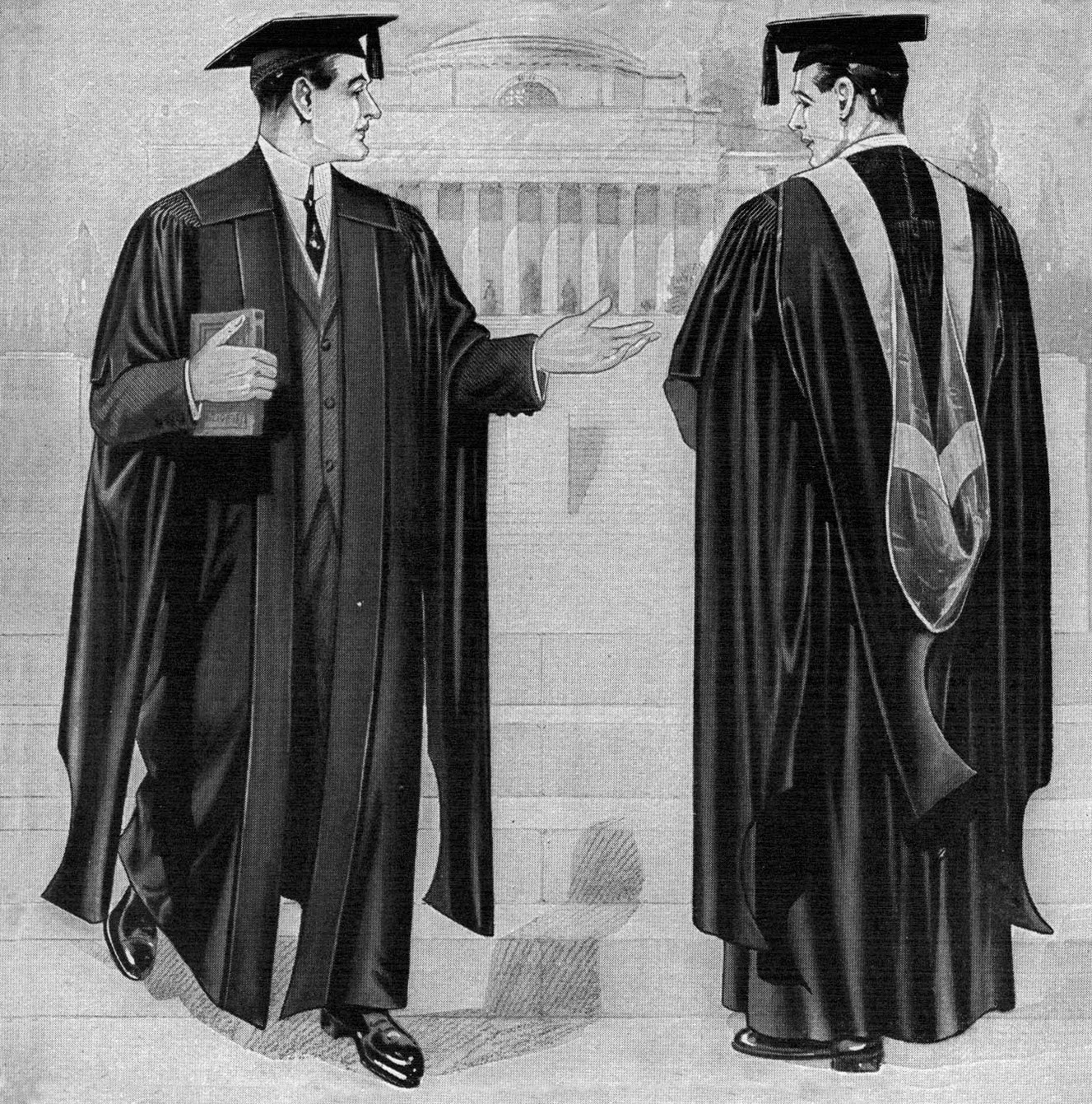Massachusetts Institute of Technology
Massachusetts
1861




A student committee at the Massachusetts Institute of Technology adopted “cardinal red” and “silver gray” as the institute’s colors in May 1876. The January 1942 issue of the Technology Review quoted a member of that committee as saying that red was unanimously chosen because “it has stood for a thousand years on land and sea in England’s emblem; it makes one-half of the stripes of our American flag; it has always stirred the heart and mind of men; [and] it stands for red blood and all that red blood stands for in life.”
Some members of the committee wanted MIT’s second color to be blue, but they were outvoted by students who preferred silver gray as a representation of the “quiet virtues of modesty and persistence and gentleness”.
In 1926 the Alumni Council sent fabric samples that had been dyed in the correct colors to the US Bureau of Standards, and in 1930 a student named Ernest Fell standardized the dyes used for MIT’s cardinal and gray as part of his chemistry thesis. Today Massachusetts Institute of Technology has based its current Pantone colors on this scientific analysis of the official shades of cardinal and silver gray.
Citations in the World Almanac (listed by cover date; color information is from the previous year): red/gray (1896); cardinal/steel gray (1897); cardinal/silver gray (1900-1910); cardinal/gray (1911-1914); crimson/gray (1915); gray/cardinal (1916); cardinal/gray (1917-1931); cardinal/silver gray (1934-1935)


Although it may have been assigned earlier, the academic hood lining design for the Massachusetts Institute of Technology was first cited in a 1918 Encyclopedia Americana article on academic costume written by Gardner Cotrell Leonard, the Director of the Intercollegiate Bureau of Academic Costume (IBAC). Leonard stated that the institute had been assigned a hood lining that was bright red with a silver gray chevron.
The IBAC tended to use “bright red” as a synonym for scarlet; it is not known why the Intercollegiate Bureau did not use MIT’s official “cardinal” shade of red; perhaps the color sample MIT sent to the Bureau was brighter than a typical cardinal shade of red. “Silver gray” was a term the IBAC used to describe a light shade of gray, which appeared silvery when tailored using satin fabric in the hood lining.

The Bureau’s hood lining assignment for MIT illustrated one way the Intercollegiate Bureau would disingenuously use color synonyms to make it seem as though they had not duplicated a hood lining, when in fact they had. For instance, by 1902 Ohio State University had been assigned a hood with a scarlet lining and a silver gray chevron; not long thereafter MIT was assigned a hood with a bright red lining and a silver gray chevron. The two hood linings were essentially identical.
The institute’s original IBAC assignment may have been changed in the late 1940s or 1950s, as a list compiled by Kevin Sheard in Academic Heraldry in America (1962) described MIT’s hood lining as cardinal with a silver gray reversed chevron. A 1969 IBAC list retained the Bureau’s original hood lining description of bright red with a silver gray chevron, but a 1972 IBAC list inverted the chevron to create a similar description to that in 1962: bright red with a silver gray reversed chevron. Reversing the chevron may have been the Bureau’s attempt to resolve the duplication problem between the hood of MIT and the hood of Ohio State.
Here, Massachusetts Institute of Technology’s correct shade of cardinal has been used, which resolves the duplication problem between the hood lining of MIT and the hood lining for Ohio State.